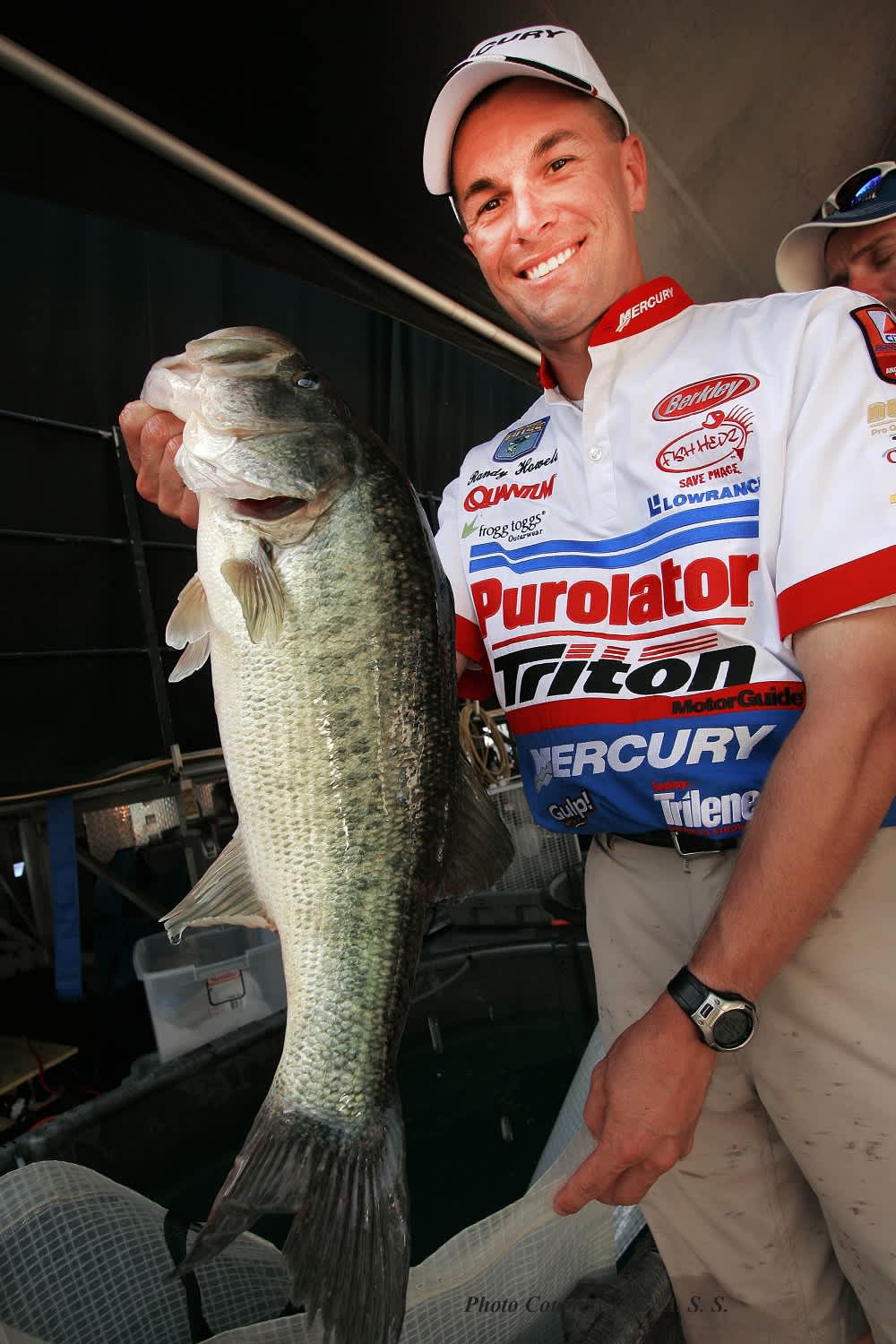How to Catch Spring Bass Now with Randy Howell
John E. Phillips 04.28.14

“We’ve had some crazy weather this spring,” Randy Howell told me me last week. “The country has had an extremely cold spring and flooding in many areas. For these two reasons, the bass spawn has been delayed across much of the United States. This week you can fish for spawning bass, prespawn bass, and post-spawn bass all at the same time. Generally bass don’t like fast-moving baits during the spawn. They usually prefer a lure with little or no action that’s easy to catch and presents a big meal. Then all they have to do is open their mouths to eat.
“This week, I’ll be sight-fishing for bedding bass, because I have so much confidence in this technique. For spawning bass, I prefer the Yamamoto five-inch Senko, which is a fat worm. If I’m fishing in a big bass lake, I’ll choose the six-inch Senko.”
Not only at this time of the year will the bass be spawning, but they’ll also be in shallow water around stumps, grass, and boat houses protecting the fry (baby bass). Howell believes that the Senko is the most dominant lure he can fish this week, because he can rig it in so many different ways. In open water that doesn’t have much cover, Howell prefers to rig the Senko wacky-style and cast the bait out, letting it slow-wiggle to the bottom. He prefers a No. 2/0 round bend straight shank Daiichi hook. He casts the lure on spinning tackle. Unless he’s fishing gin-clear water, he’ll use 20-pound-test braided line.
According to Howell, “One color you can fish successfully for bass almost anywhere in the nation [this time of year] is watermelon/green pumpkin laminate. Half of this Senko is watermelon-colored, and the other half is green pumpkin-colored. The other two colors I like are watermelon red or green pumpkin red. I’ll cast the Senko in open water, skip the bait under boat houses and overhanging limbs, or cast it beside grass beds. Most of my strikes come when the bait is falling.”
If Howell is fishing an area with a lot of brush cover or holes in the grass, he rigs the Senko Texas-style with no weight to make the worm weedless. Then he can pull it through cover, slide it across grass beds, let it fall into holes or swim it like it’s a swimming worm. If you’re not targeting bank-bound bass, you can’t beat a light Carolina rig. Howell uses a 7-1/2-foot baitcasting rod with 16-pound test Gamma Edge flourocarbon line as his main line. He puts a 1/2-ounce tungsten weight up the line, a bead below the weight, and a barrel swivel beneath the bead on 14- or 16-pound-test leader. Howell fishes a No. 4/0 Daiichi offset worm hook with either a Yamamoto green-pumpkin or watermelon-red lizard.

“I make long casts on flat points in two to four feet of water all the way back to the boat, which is in 10- to 15-foot deep water,” Howell reported. “I fish the Carolina rig around the last points leading out to the main channel from the spawning bays, coves and flats.”
Another lure that Howell will fish all day this week is the new Lunker Lure Buzz-N-Shad that has a buzzbait propeller with a lead head. You also can screw a plastic swimbait on to the head of the buzzbait. Then you have a buzzbait with a swimbait body that gives the bass a different-looking lure. “When the bass are in shallow water, I fish this lure all day long,” Howell said.
For more information about Randy Howell, visit www.randyhowell.com.
To learn more about bass fishing, get John E. Phillips’ Kindle eBooks, How to Bass Fish Like a Pro, How to Win a Bass Tournament, and Catch the Most and Biggest Bass in Any Lake: 18 Pro Fishermen’s Best Tactics, or go to http://www.amazon.com/kindle-ebooks, type in the names of the books, and download them to your Kindle and/or download a Kindle app for your iPad, smartphone, or computer.

